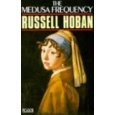I’ve been chatting to my sister about the book she is writing and she said she was afraid that it might head off to chicklit territory if she wasn’t careful and lose the MAGICAL REALISM element. Now call me me ignorant but I didn’t know there was such a genre. She was trying to get her youngest to bed so couldn’t give me an idiot’s guide to the genre so just gave me an example you have to accept the magical things that happen if a book also contains such mundane things as people getting on and off a bus.
Well of course I went off a-googling and found this:
Felix Grant (http://www.geocities.com/Athens/4824/magreal.htm#beginning ) says:
Magical Realism is, like all such categorisations, impossible to define precisely. It also overlaps other genres — including “fantasy” and “science fiction.”
He then proceeds to list 7 books widely considered to belong to the canon of magical realism and a further 18 that he teaches about on his lit course. I didn’t do very well with the list. I own 3 of the 25 books, started two, put them aside: bought another for the woodcuts rather than the book but DID read and enjoy it. I’m wondering if I should gather some of these volumes to my ample bosom and take them with me on holiday next month and explore a new genre. Anyone else up for exploring new territories? You can see the full list below with my notes about my scant knowledge of the books listed.
Watertight agreement on a “canon” is difficult to obtain, and I wouldn’t claim it for my list. Perhaps the first seven titles below could be said to belong within the canon; beyond that the borders are hazy.
These seven are generally accepted and quoted by a range of authorities as definitive examples of Magical Realism:
* Carey, Peter (Australia) Illywhacker
* Carter, Angela Nights at the Circus
* Kundera, Milan (Czech) Immortality
* García Márquez, Gabriel (Colombia) One Hundred Years of Solitude
* Rushdie, Salman (UK/India) Midnight’s Children and Shame
* Swift, Graham (UK) Waterland
I think I STARTED Illywhacker but put it aside
Heard of Angela Carter but not Nights at the Circus
Heard of Milan Kundera but not Immortality
Heard of Salman Rushdie and Midnight’s Children (started it, can’t remember finishing it) but not Shame
Heard of Waterland but not Graham Swift
A lot of fiction which predates the term Magical Realism is nevertheless recognised as falling within its definition. The most obvious example is Kafka, and in particular:
* Kafka, Franz (Czech) Metamorphosis
Yep heard of that
I teach my own lit courses on the basis that the following are indicative examples of the range covered by the Magical Realism label, and my immediate colleagues are in general agreement, but they are not sanctified by universal acceptance! I’ve limited myself to one book per author only for brevity and clarity.
* Allende, Isabel (Chile) Of Love and Shadows author but not book
* Aitmatov, Chingiz (USSR) The Day Lasts More Than A Hundred Years NO
* Doctorov, E L (US) Loon Lake author but not book
* Eco, Umberto (Italy) Foucault’s Pendulum heard but not read
* Fowles, John (UK) A Maggot heard but not read
* Gearhardt, Sally M (US) The Wanderground heard but not read
* Golding, William (UK) The Paper Men author but not book
* Greenland, Colin (UK) Other Voices NO
* Le Guin, Ursula K (US) Threshold author (thought she was scifi / fantasy)
* Hesse, Herman (Germany) Magister Ludi author but not book
* Hoban, Russell (US/UK) The Medusa Frequency NO
* Hoeg, Peter (Denmark) The History of Danish Dreams author but not book
* Hospital, Janette T (Australia) The Last Magician NO
* Lessing, Doris (UK) The Memoirs of a Survivor author but not book
* McEwan, Ian (UK) The Child in Time author but not book
* Read, Herbert (UK) The Green Child YES – READ IT -GOT IT – bought it for the woodcuts!
* Ransmayer, Christoph (Austria) The Last World NO
* Saxton, Josephine (UK/US) Queen of the States NO
 A mix of the old and the new – new shirts made from vintage textile designs – Pigletchops limited edition Mary White textile shirts.
A mix of the old and the new – new shirts made from vintage textile designs – Pigletchops limited edition Mary White textile shirts.

 I’ve almost finished reading NOAH’S ARK by Barbara Trapido but I have been annoyed and distracted by a couple of errors which should I think have been picked up by an editor. Quite early on there was a reference to the books of Beatrice Potter. That niggled away at me and, although a little self-doubt crept in, I was in danger of being stared at on the train for chuntering out loud, “I know I’m right, I can’t have been wrong all these years.”
I’ve almost finished reading NOAH’S ARK by Barbara Trapido but I have been annoyed and distracted by a couple of errors which should I think have been picked up by an editor. Quite early on there was a reference to the books of Beatrice Potter. That niggled away at me and, although a little self-doubt crept in, I was in danger of being stared at on the train for chuntering out loud, “I know I’m right, I can’t have been wrong all these years.”



 I’ve selected three books, the two you can see here; “The Medusa Frequency” by Russell Hoban and “Nights at The Circus” by Angela Carter. I am waiting for “Threshold” by Ursula Le Guin to arrive.
I’ve selected three books, the two you can see here; “The Medusa Frequency” by Russell Hoban and “Nights at The Circus” by Angela Carter. I am waiting for “Threshold” by Ursula Le Guin to arrive.


